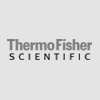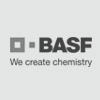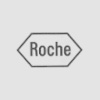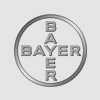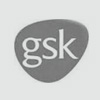- Description
- Specifications
Catalog #: ENZ-286
Description:
T4 DNA Ligase catalyzes the formation of a phosphodiester bond between juxtaposed 5' -phosphate and 3' -hydroxyl termini in duplex DNA or RNA. This enzyme will join blunt end and cohesive end termini as well as repair single stranded nicks in duplex DNA, RNA or DNA/RNA hybrids.
Synonyms:
DNA ligase 4, EC 6.5.1.1, DNA ligase IV, Polydeoxyribonucleotide synthase [ATP] 4.
Source:
Escherichia Colilambda lysogen NM 989.
Applications:
Cloning of restriction fragments.
Joining linkers and adapters to blunt-ended DNA.
Formulation:
50mM Tris-HCl (pH 7.8 at 25 °C), 10mM MgCl2, 10mM DTT, 1mM ATP, 25 µg/ml BSA and DNA (0.1 to 1 µm in 5 ´ termini). Optimal ligation occurs at 16C.
Formulation:
50mM KCl, 10mM Tris-HCl (pH 7.4), 0.1mM EDTA, 1mM DTT, 200 µg/ml BSA and 50% glycerol. Store at -20C.
Activity:
One Weiss unit is equivalent to circa 67 cohesive-end ligation units.
• T4 DNA Ligase is strongly inhibited by NaCl or KCl if the concentration is > 200mM.
• Ligation of blunt-ended and single-base pair overhang fragments requires about 50 times as much enzyme to achieve the same extent of ligation as cohesive-end DNA fragments. Blunt-end ligation may be enhanced by addition of PEG 4000 (10% w/v final concentration) or hexamine chloride, or by reducing the ATP concentration to 50 µM.
• To dilute T4 DNA Ligase that will subsequently be stored at –20 °C, 50% glycerol storage buffer should be used; to dilute for immediate use, 1x T4 DNA Ligase reaction buffer can be used.
Endonuclease Activity:
Incubation of a 50 µl reaction containing 13,000 units of T4 DNA Ligase with 1 µg of X174 RF I DNA for 4 hours at 37 °C resulted in < 5% conversion to RFII as determined by agarose gel electrophoresis.
Exonuclease Activity:
Incubation of a 50 µl reaction containing 13,000 units of T4 DNA Ligase with 1 µg of a mixture of single and double-stranded [3H] E. coli DNA (200,000 cpm/ug) for 4 hours at 37 °C released < 0.3% of the total radioactivity.
Nuclease Activity:
Incubation of 13,000 units for 18 hours in assay buffer (without ATP) with Hind III fragments of gamma DNA yielded a clear and sharp banding pattern on agarose gels.
Physical Appearance:
Sterile filtered liquid formulation having a concentration of 167,000 U/ml.
Quality Control Tests:
Purified free of contaminating endonucleases and exonucleases. Each lot of T4 DNA ligase is also tested in a mock cloning assay, which reveals any damage to the ligated DNA termini. Greater than 99.9% of the termini remain undamaged in this assay.
Heat Inactivation:
T4 DNA Ligase can be inactivated by incubation at 65C for 10 minutes.
Unit Definition:
1. One unit is defined as the amount of enzyme required to give 50% ligation of Hind III fragments of DNA (5 ´ DNA termini concentration of 0.12 µM, 300- µg/ml) in a total reaction volume of 20 ul in 30 minutes at 16 °C in 1X T4 DNA Ligase Reaction Buffer. 2.One Weiss unit is defined as the amount of enzyme required to catalyze the exchange of 1 nmol of 32P from pyrophosphate to ATP, into Norit-adsorbable material in 20 minutes at 37 °C.


